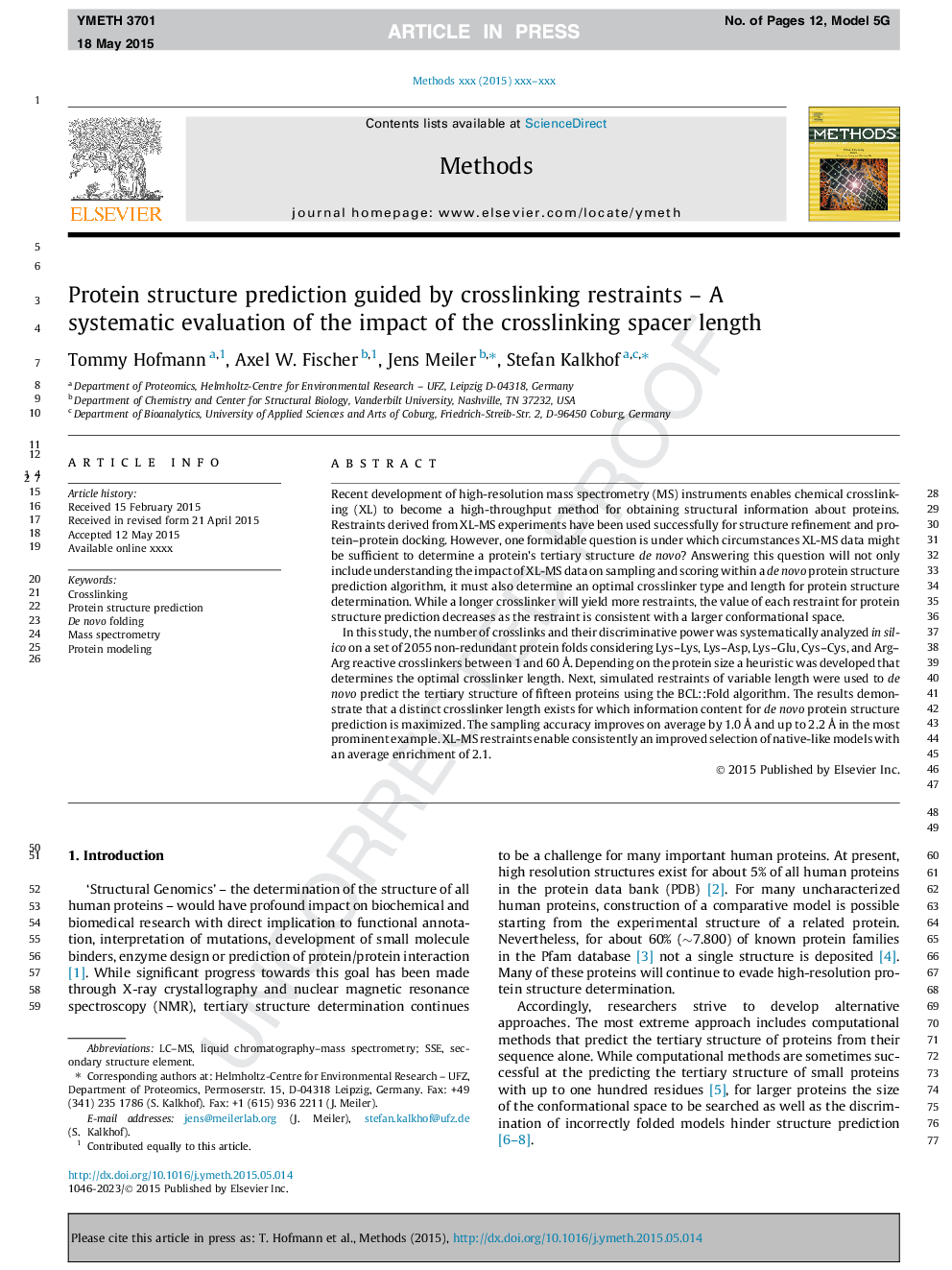| Article ID | Journal | Published Year | Pages | File Type |
|---|---|---|---|---|
| 8340486 | Methods | 2015 | 12 Pages |
Abstract
In this study, the number of crosslinks and their discriminative power was systematically analyzed in silico on a set of 2055 non-redundant protein folds considering Lys-Lys, Lys-Asp, Lys-Glu, Cys-Cys, and Arg-Arg reactive crosslinkers between 1 and 60Â Ã
. Depending on the protein size a heuristic was developed that determines the optimal crosslinker length. Next, simulated restraints of variable length were used to de novo predict the tertiary structure of fifteen proteins using the BCL::Fold algorithm. The results demonstrate that a distinct crosslinker length exists for which information content for de novo protein structure prediction is maximized. The sampling accuracy improves on average by 1.0Â Ã
and up to 2.2Â Ã
in the most prominent example. XL-MS restraints enable consistently an improved selection of native-like models with an average enrichment of 2.1.
Keywords
Related Topics
Life Sciences
Biochemistry, Genetics and Molecular Biology
Biochemistry
Authors
Tommy Hofmann, Axel W. Fischer, Jens Meiler, Stefan Kalkhof,
